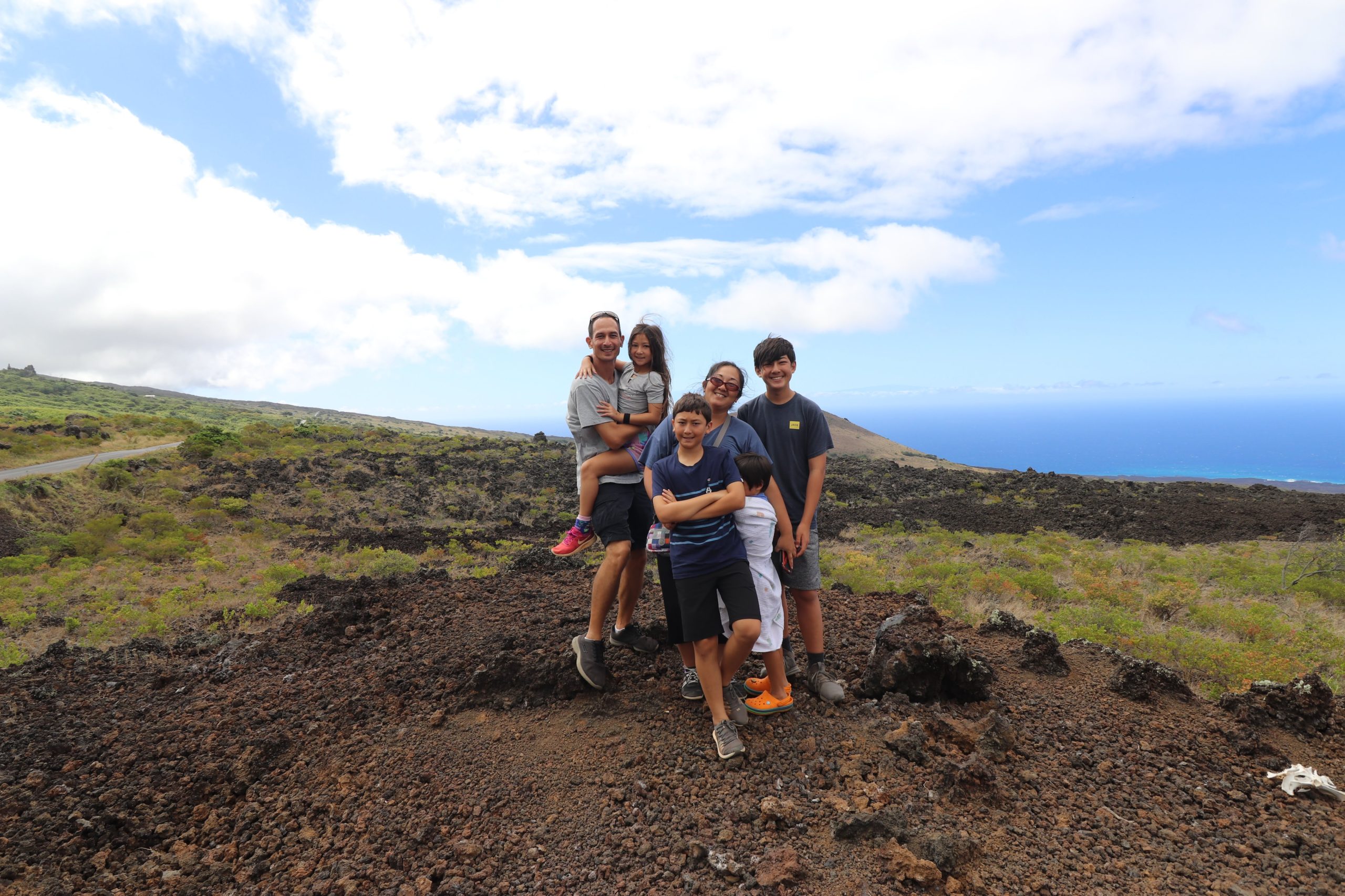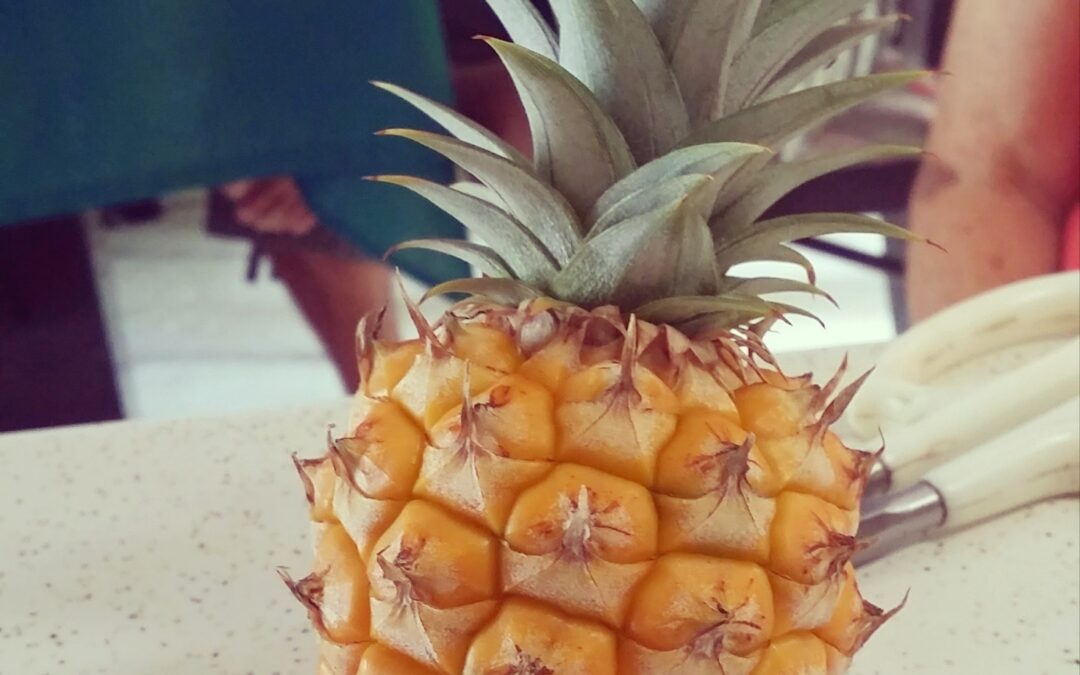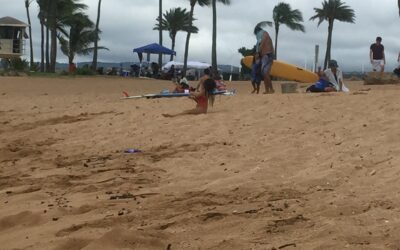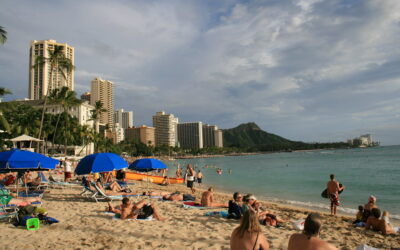A Little Bit About the Big Island…
The island of Hawaii – commonly known as the Big Island – is the youngest and biggest of the islands making up the Hawaiian Island chain. The Big Island earned its name and is practically double the size of all the other islands combined! In addition, the quiet, low-key atmosphere, beautiful scenery, amazing landscapes and geography, volcanoes, and ocean activities available make this Hawaiian Island an amazing place to visit, relax, and explore!
At approximately 10,432 km sq., the island of Hawaii is home to many different climates and landscapes, from active volcanoes to high mountain tundra, from tropical rainforests, to open grasslands, and rocky deserts. The Big Island has a lot going on for such a tiny place in the middle of the Pacific Ocean.
Fun Fact: The Big Island has an astonishing 4 out of 5 major climate zones found throughout the world (and 8 out of 13 subzones if you want to break it down even further!)
Airports
The Big lsland has two international airports located on opposite sides of the island: Ellison Onizuka Kona International Airport and Hilo International Airport. Shuttles are often available between the Kona Airport to the major resorts in South Kohala, however, if you’re planning to explore the Big Island in its entirety, renting a car is your best bet. The roads are usually easy to navigate and a rental car will give you more flexibility as you sightsee around this beautiful island.
Regions
For geographic and weather purposes, the Big Island is typically divided into six regions: Kona, Kohala, Hamakua, Hilo, Puna, and Ka’u. Also, similar to the other Hawaiian Islands, the Big Island has a dry side (Leeward) and wet side (Windward) – Kona and Kohala are on the Leeward side and Hamakua, Hilo, Puna, and Ka’u are all on the Windward side. If you decide to do a road trip around the island, it’ll be very obvious which side gets more rain!
 Regions of the Big Island
Regions of the Big Island
Kona: Kona is located on the Leeward (dry) side of the island and is also the location of one international airport. The Kona district includes almost 2/3rds of the west side of the island and has everything from historic landmarks, National Historic Parks, resorts, coffee farms, beaches, and favorite snorkeling spots.
Kohala: North of Kona, at the northern tip of the Big Island, is Kohala. Because of the vastly different environments, Kohala is sometimes divided into South Kohala and North Kohala with South Kohala also being referred to as the Gold Coast due to the numerous five-star resorts in the area. Outside of the resort towns of South Kohala the area is dry, hot, and covered in old, black lava rock but past that, the landscape shifts to the grassy rolling hills of North Kohala and paniolo (cowboy) country.
Hamakua Coast: Rounding the top of the island is Hamakua Coast on the windward side. Located on the northeastern side of the island, the Hamakua Coast is amazingly beautiful with incredible waterfalls, lush tropical rainforests, and gorgeous views of the rural landscape.
Hilo: Hilo is home to the Hilo International Airport and is also the oldest city in the Hawaiian Islands. Once, a bustling fishing and farming area, Hilo later played a big role in the commercial production of the local sugar cane industry in the nineteenth century and now thrives as a charming local town with museums, art galleries, unique shops, and restaurants.
Puna: Just south of Hilo, Puna lies at the easternmost tip of the Big Island. Due to the fertile volcanic soil, Puna is known for its numerous farms growing fruit, flowers, macadamia nuts, and more. Parts of Puna were affected by volcanic activity in 2018 but currently, all volcanic activity as of 2023 has been within the Halemaʻumaʻu crater located in Hawai’i Volcanoes National Park.
Ka’u: The largest and southernmost region of the Big Island, Kau is most famously known for Punalu’u Black Sand Beach. In addition, it is also home to Hawai’i Volcanoes National Park (pinch your nose, the closer you get to the park, the more you might smell the sulfur!) You’ll also find hiking trails, coffee farms, macadamia farms, and cattle.
Transportation
If you are planning to do a round-the-island trip, make sure you give yourself enough time to see everything you want to see. The Big Island is bigger than many expect and it takes approximate 6-7 hours to drive around the island. However, if you want to stop and visit various parks, beaches, and towns, in our experience, I would budget at least 10+ hours. The last time we drove around the Big Island, we went with my parents, adult siblings, my husband, and our two small sons in two minivans; with that larger group, we left the hotel at 6 AM and returned past 9 PM.
At the same time, if you don’t feel like doing the drive yourself or you’re not sure where to visit around the island, don’t worry! There are also guided tours available for a variety of day trips. Note: Whether you’re driving your self or taking a guided tour, if you are prone to motion sickness, make sure you bring some medicine or motion bands because some roads leading to major tourist sites are pretty winding and getting car sick on a 10+ road trip is no fun!
Car Rental Alternatives
Outside of rental cars and bus tours, these are some low-cost alternatives for transportation. Please keep in mind, however, if your on your first trip to the Big Island, want to travel around the entire island, OR have limited vacation time, I probably wouldn’t recommend these options. If you’re planning to spend most of your time in one area or are planning a work-from-home type situation, these might be great alternatives for you.
Hele-On is the public bus system on the Big Island and has approximately 12 routes with limited stops. Currently, Hele-On is FREE. Prior to this program being approved in 2022, the basic bus fare was $2.00 per person ages five and older with an additional fee of $1.00 per suitcase. As of February 28, 2022, the bus is now free with a 2-year approval for this trial run. Please check their website for updates to their pricing.
For more information on accessing Hele-On public transportation services – the public bus, shared taxis, and rental bikes – please visit http://www.heleonbus.org/
On a side note: There is a downside to the Hele-On bus transportation: for the buses, the routes are limited and the connection times are few and far between. In addition, there are also some restrictions on the Hele-On shared taxi service too (please check the website for the most updated information.) If you’re visiting for a short time, these options might not be the best way to maximize your vacation. Unfortunately, I have never used Hele-On during my trips to the Big Island, so I can’t comment from personal experience.
So, to summarize, outside of car rental the other options are: guided tours, Hele-On public bus system, Hele-On supported shared-taxi services, rental bikes, Uber and Lyft, as well as regular taxis.
Weather
Weather Across the Islands
There are basically two main seasons throughout most of the Hawaiian Islands: a warm, drier “summer” season – from April to November – and a “winter” season – from mid-November to March – which has slightly cooler temperatures and wetter weather. *This is approximate, as I’ve had hot Decembers and chilly Septembers but, Hawaii weather is pretty nice year round, so I wouldn’t be too worried.
There is no “monsoon” season like in many tropical climates even though it tends to rain a little more in the winter, however, there is a Hurricane Season which is between June through November, with August and September being the most active months.
A bit more on hurricane season: Hurricane season lasts from June through November. We actually do not get hit with a hurricane very often, even though some years, several come close to the Hawaiian Islands. In fact, since the 1950s, only five hurricanes have landed on the Hawaiian Islands: Hurricane Nina in 1957, Hurricane Dot in 1959, Hurricane Iwa in 1982, and Hurricane Iniki in 1992.
Often before hurricanes reach the Hawaiian Islands they get downgraded to tropical storms or depressions. Keep in mind, these storms can still cause a lot of rain, flooding, or damage to land and property even though they are no longer labeled as “hurricanes.”
If you are traveling during hurricane season, I would recommend, keeping an eye on the weather near your travel dates. Most likely, hurricanes downgrade or veer away from the Hawaiian Islands before they cause harm, but use your personal discretion to decide if it makes sense to cancel or alter your travel plans since the weather may still impact flights and activities during your vacation.
Big Island Weather
For the Big Island specifically, the weather is usually nice all year round, with the Leeward side being a little warmer and drier and the Windward side being cooler and rainier. In the Kohala region (where many of the resorts are located), since the weather is almost always sunny with clear skies, perhaps, the best time to travel isn’t impacted by the weather but instead on whether or not there are any good deals at the resorts?! Just wanted to mention it…LOL. That being said, the best time to visit the Big Island is often from mid-September through early November (after school starts but before the holidays begin). The second best time is usually from April through early May. I think it avoids to local spring break crowd but ends before graduation season begins.


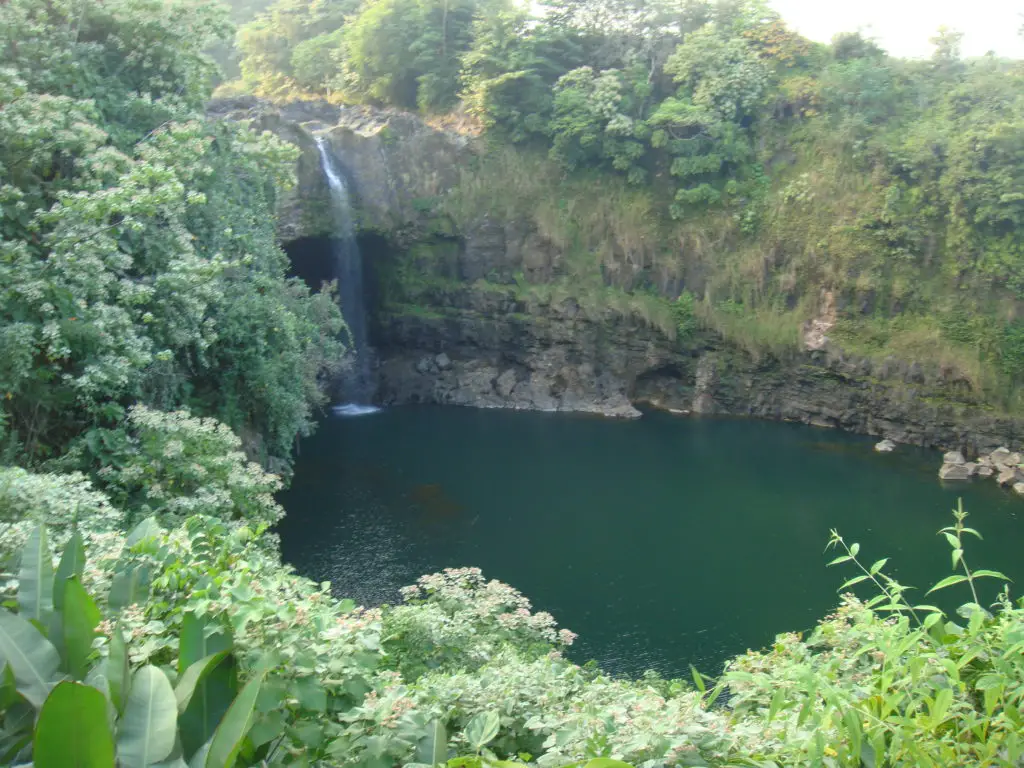
Other Facts about the Big Island (Hawaii)
Active volcanoes: There are five major volcanoes on the Big Island and two of the five volcanoes that formed the island are still active: Kilauea and Mauna Loa. Even though both volcanoes are active; it doesn’t mean they are always erupting. However, Kilauea is the most active with the most recent eruption occurring in September 2023. Whether or not a volcano is erupting, I think it’s still worth it to make a trip out to the Hawai’i Volcanoes National Park.
Ellison Onizuka: One of the astronauts from the fatal Challenger explosion in 1986 was Ellison Onizuka from the Big Island. In honor of his memory, the Kona International Airport was renamed the Ellison Onizuka Kona International Airport in January 2017.
Kama’ehuakanaloa: A baby island is forming…well has been forming for the last 400,000 years! Approximately 22 miles southeast of the Big Island, a seamount (or active submarine volcano) Kama‘ehuakanaloa (previously named Lōʻihi Seamount) is forming about 975 miles below sea level. As the next new island for our Hawaiian chain, Kama‘ehuakanaloa is expected to reach the surface in about 10,000 to 100,000 years. ????
Kamehameha the Great: Kamehameha I, also known as Kamehameha the Great founded and reigned as the first ruler of the Kingdom of Hawaii. He unified the Hawaiian Islands as one kingdom in 1810 and is believed to have been born in Waipio Valley in the North Kohala area.
Captain James Cook: A British explorer, Captain James Cook is most well-known for his documentation of his travels and expeditions throughout the Pacific Ocean – he spent twelve years sailing around Canada, along the coasts of North America, Australia, and New Zealand, Antarctica, and the Hawaiian Islands. He was recorded as the first European to set foot on the Hawaiian Islands.
Mauna Kea: From its base at the seafloor to its highest peak, Mauna Kea is the world’s tallest mountain, even taller than Mount Everest. It is also to home to a variety of native plants, insects, spiders, the native Hawaiian hoary bat, and a several birds – a few of these native species are listed as endangered species. Mauna Kea is also home to 13 observatories with 9 telescopes funded by over 11 countries around the world.
General Things About the Hawaiian Islands
Hawaii is the 50th state in the United States, our currency is the US dollar, and English is the most commonly spoken language in the Hawaiian Islands. We follow Hawaii Standard Time (GMT -10 hours) and Hawaii does not observe Daylight Savings Time. As of the 2020 census, our local population is very ethnically diverse with 22.9% White, 37.2% Asian, 10.8% Native Hawaiian and/or Pacific Islander, and 1.6% Black, with 25.3% of the population classifying themselves as multi-racial.
Fun Fact: Hawaii is the only state with two official languages: English and Hawaiian. While the Hawaiian language is not as commonly spoken as English, be ready to see a large number of local street names, towns, restaurants, historic sites, and more with Hawaiian names.
Travel: When visiting Hawaii from another state or country, the flight attendants will announce that you must consume all foods before landing and you must fill out a declaration form from the U.S. Department of Agriculture. This is required for each person arriving in Hawaii to prevent uninspected plants and animals from entering the Hawaiian Islands. There are also restrictions for carry-on luggage regarding certain fruits and vegetables, plants, and flowers between islands. Please check before boarding, even if you are just interisland-hopping.
Please note: The primary reason for the form and these agricultural restrictions is to protect the local ecosystems which are not always built to protect themselves from invasive pests, plants, and animals. When an invasive plant, insect, or animal is placed in an island’s local ecosystem, at a minimum, the invasive pests are annoying and costly to remove, but in more severe cases, they can completely decimate native plants and animals. To date, hundreds of plant and animal species have gone extinct with hundreds more on Endangered Species lists. As part of a community that enjoys the Hawaiian Islands, we’d like to preserve the remaining native species to the best of our abilities. Thank you!


